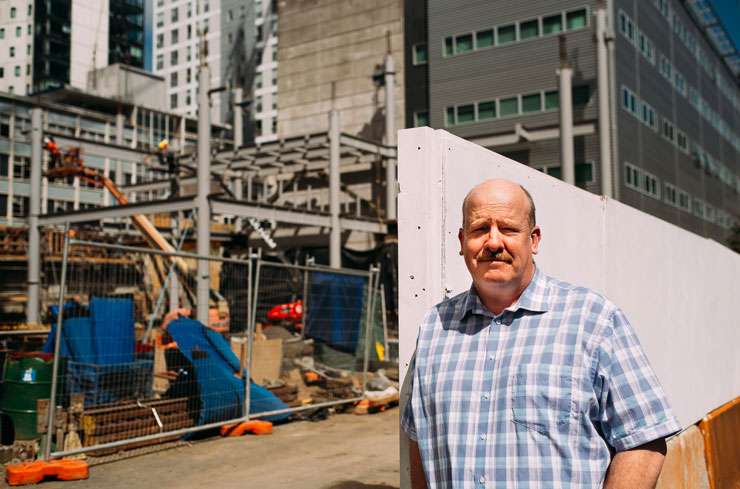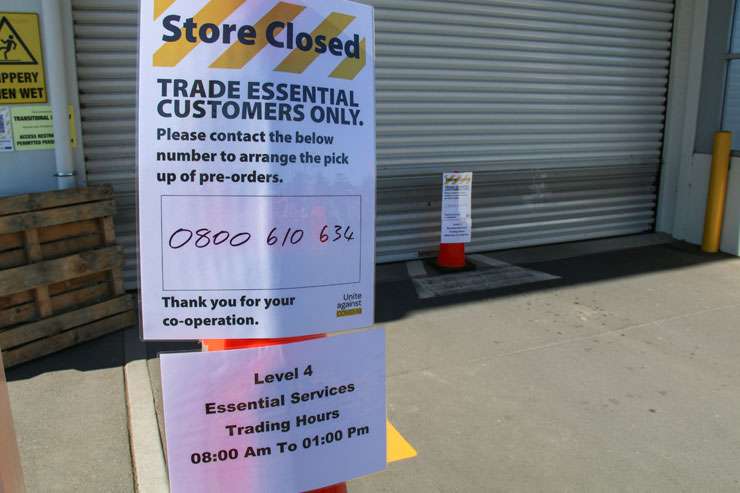AUCKLAND: Unnecessary delays are hurting developers
This year Andrew Crosby’s company will finish more than 170 homes in Auckland, ranging from terraces to walk-up apartments, in Westgate, Hobsonville Point and Northcote. It will also start a further 64 in Westgate and another 130 or so also in Northcote.
But “onerous” design and view panels can hold up developments, says Crosby, the chief executive of Universal Homes.
“Sometimes you feel like you can’t resolve them, and then months pass before you can lodge a consent. That’s slowing down the production of houses.”
Start your property search
Sometimes delays are caused by something more leftfield, like when a street name gets changed.
“We had a street name in Westgate that was all confirmed, then later we were told ‘no, you can’t use that name any more’.
“We were all set to go to the July meeting and the local board – not the council but councillors – bumped the meeting.”

AUT professor John Tookey says the lockdown will have a significant impact on supply. Photo / Supplied
Rescheduling for the following month might seem simple, but for the company that translates to another month or two where they can’t get titles, meaning people are delayed moving into their homes – “that’s affecting 76 houses in Westgate”.
Also out west, council infrastructure decisions kept flip-flopping between fast bus to light rail and back to bus.
Each change leads to delays, he says. “It affects everything. Time is not a developer’s friend.”
The recent Covid lockdown has added a new layer of difficulty for the industry, with experts predicting a significant drop in new home output as a result of the restrictions.
John Tookey, professor of construction management at Auckland University of Technology, says the alert level 4 restrictions brought in to combat the Delta variant have turned what was “wicked” problem into a “fiendish” one, with building sites in Auckland closed for more than a month, and sites outside of the city closed for several weeks.
“The lockdown is going to have a massive flow-on effect on the backlog of demand in the housing market,” Tookey says, stressing that the loss is in potential output.
Even though outside of Auckland moved to alert level 2, builders nationwide are dependent on construction materials coming from the city, and as a result, aren’t necessarily being as productive as they could.
“Auckland has a ripple effect through the rest of the economy. The total lost production is likely to be six to eight weeks in Auckland and five to six weeks nationally.
This is more than 10% of the total number of houses [the country] anticipated building this year.”
With more than 19,000 consents in Auckland in the past year that could mean 1,900 to 2850 fewer houses being available to accommodate people this year.
HAMILTON: ‘We know we must build up’
Despite being the country’s third smallest Territorial Authority, Hamilton is home to the country’s fourth largest population, nearly 180,000 people, and this brings some distinct challenges for managing growth, says Blair Bowcott, Hamilton City Council’s general manager growth.
Like everywhere, building consents have been at record highs but Bowcott says the housing shortage is even more apparent in Hamilton and the wider Waikato because of the strong population and economic growth.
The council has identified specific areas of growth, which are Rototuna, Rotokauri, Ruakura, the City Centre and Peacocke, a semi-rural suburb to the south where it is envisaged 20,000 people will eventually live.
One way to achieve growth in the city centre, where Bowcott says “we know we must build up”, is by incentivising central city developments.
To that end, development contributions have been adjusted with a 50 per cent discount for buildings under six storeys and 100 per cent for six storeys and above.

The recent Covid lockdown closed down constructions sites and supply stores around New Zealand. Photo / Getty Images
Hamilton is committed to the Government’s urban development direction but will have to make some big changes to the district plans. It’s also taking a “boundaryless” approach to growth by working with neighbouring councils, like Waipa, to earmark areas for future expansion.
CHRISTCHURCH: ‘The rubber band’s as stretched as far as it can go’
If Auckland, Hamilton and other parts of the country are booming, then Canterbury is having a super-boom.
Management consultant to the construction industry Mike Blackburn says Canterbury is seeing three times more building than other parts of the country, and driving the demand is a “massive” internal migration of people from Auckland and elsewhere relocating south because houses are still cheaper.
But the demand is incredible, leading to consent backlogs in Christchurch City and Selwyn District councils, he says.
While Christchurch is a special case, in that the earthquakes enabled the city to think about growth and factor it into new infrastructure, Blackburn says infrastructure can’t keep pace.
In neighbouring Selwyn, he says demand is so high for greenfield subdivisions that it’s almost impossible to buy a section, and because councils and the construction industry are at such capacity building is unlikely to start until 2023.

Darfield, in Canterbury, is proving popular with buyers but it’s lacking the infrastructure to cope with increased demand. Photo / Getty Images
“That’s how far in advance group home builders and the market are working.”
People in Canterbury are also worried about the amount of sprawl, he says, pointing to Darfield, a tiny town about 50 minutes from Christchurch that’s suddenly in hot demand.
At the end of July, 19 new residential dwellings were consented in Darfield, bringing the total so far this year to 38, which is already more than double last year’s total.
Darfield has no town sewer services so people buying, who he says can’t get into Rolleston, Lincoln or Christchurch, are having to put in septic tanks.
The town is being caught up in the country’s ongoing, relentless demand for new housing, which Blackburn says at some stage can’t continue: “If you think of the construction industry as like a rubber band, at the moment the rubber band is stretched about as far as it can go.”











